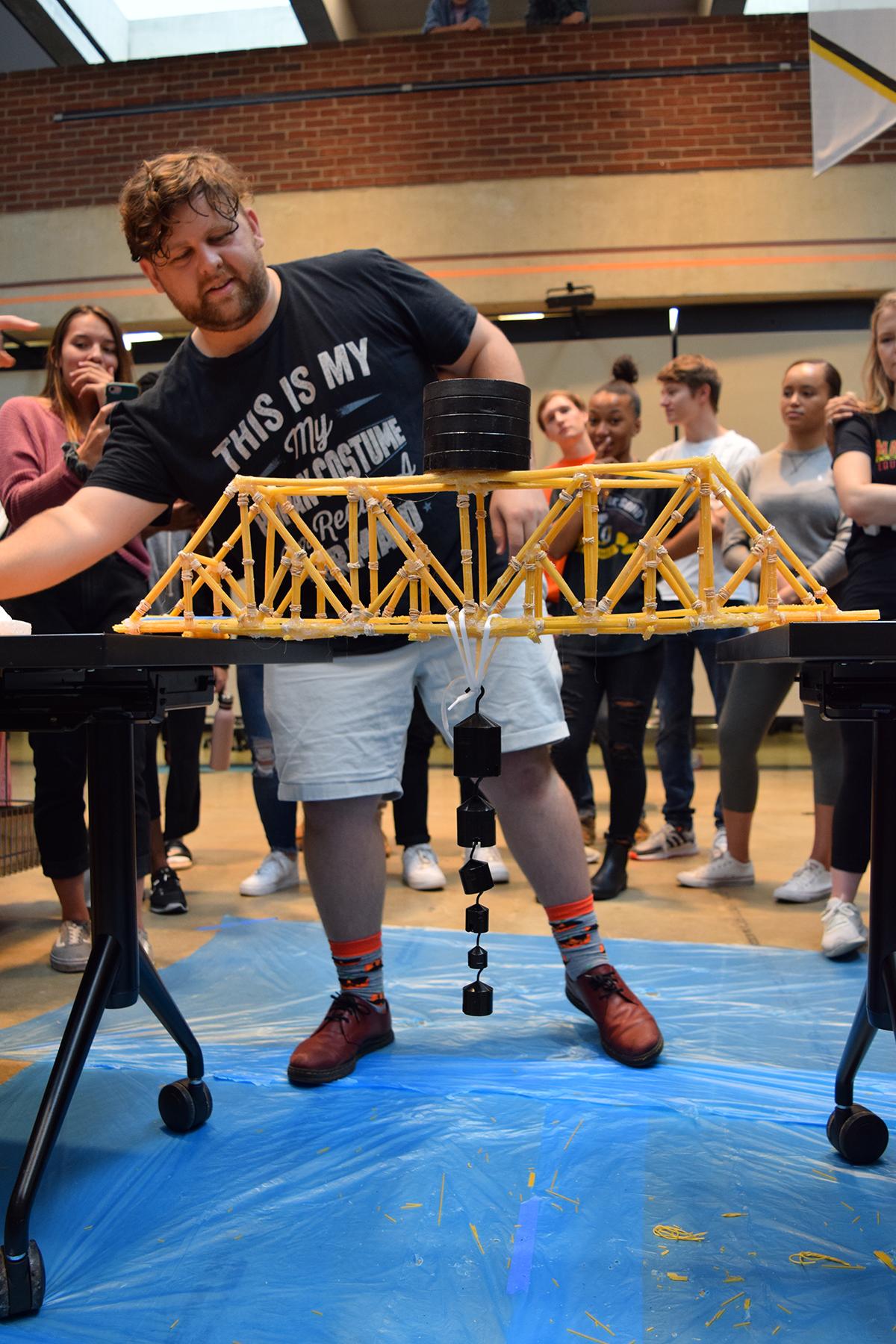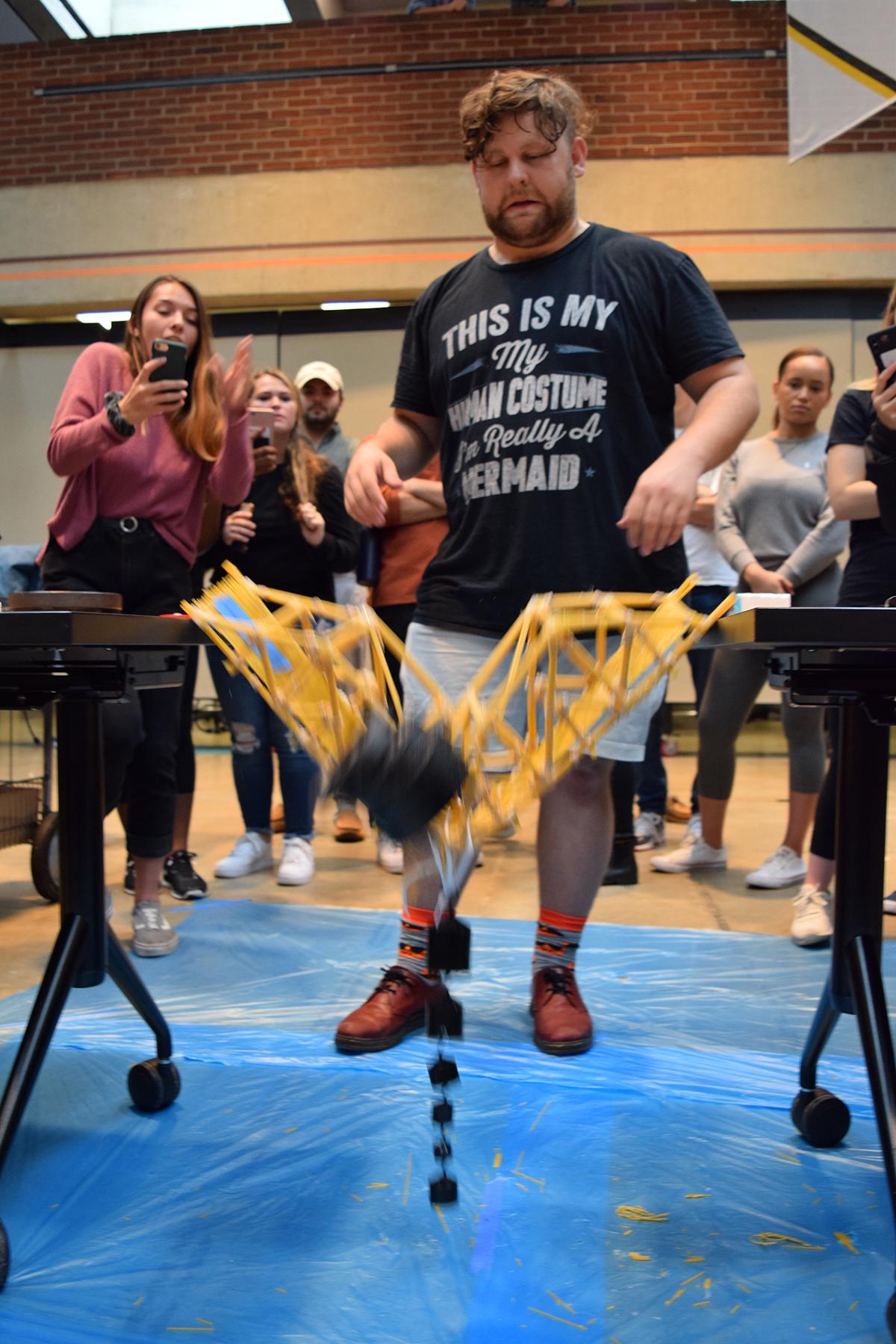Excitement Boils over at Architecture’s Pasta Bridge Competition
For one of their biggest class competitions, architecture undergraduates tapped an unconventional source for materials to build a model bridge yesterday: their kitchens.
With high tension, loud applause and throngs of onlookers, the pasta bridge competition filled the architecture building’s open design space with student teams anxiously watching to see whose bridge would literally crack under pressure.
Part of the architecture program’s Structures I class, the spaghetti bridge competition was conceived three years ago by Assistant Professor Ming Hu as an engaging way for students to visualize and practice the structural principals they learned in class. It’s a far cry from the course she walked into four years ago.
“My first year teaching this class was deadly,” said Hu. “It just wasn’t fun.”
She knew she needed to inject something more engaging than a lecture into the course, which is a requirement for architecture undergraduates.
“I was looking for an activity related to what I was teaching, something the students could do in teams, but that was cheap,” she laughs. “It doesn’t get much cheaper than pasta.”
According to Hu, pasta is also surprisingly strong, able to withstand different types of tension and load. Built correctly, a pasta bridge can hold up to 20 times its own weight.
In addition to testing out concepts like point load, torsion and bending stress, student teams are confined to a strict set of building rules: no more than two boxes of pasta can be used, the structure must span 2 feet and be wide enough for a modest Styrofoam model car to travel across.
On competition day, each finished product is straddled between two desks, where weight is systematically added to test strength and resilience. In other words, real-world constraints.
“The project limitations are very similar to what an architect or engineer would face in the real world,” said Sam Reid ’21, whose team might have pulled an all-nighter to complete their bridge. “It allows us to take what we’re learning in class and experiment with these concepts through a tangible project. It’s a lot different than learning on a screen.”
The project also helps students visualize how a bridge will behave and why, depending on its construction. Projects this year ranged from lightweight, one-box marvels to elaborate truss-laden goliaths.
“Architecture students are probably more visual than most,” added Austin Register ’21. “We learn a lot of complicated physics concepts in this class. What I like about this is even when the bridge fails, we can look at where it broke and understand why.”
If failure is judged by whether the bridge collapses, there were some epic fails in the Great Space yesterday. The only sound louder than the spaghetti hitting the floor were the hollers and cheers of the students.
“Learning from failure is very effective,” says Hu. “And it’s fun for the students to watch their stuff break.”
-By Maggie Haslam



